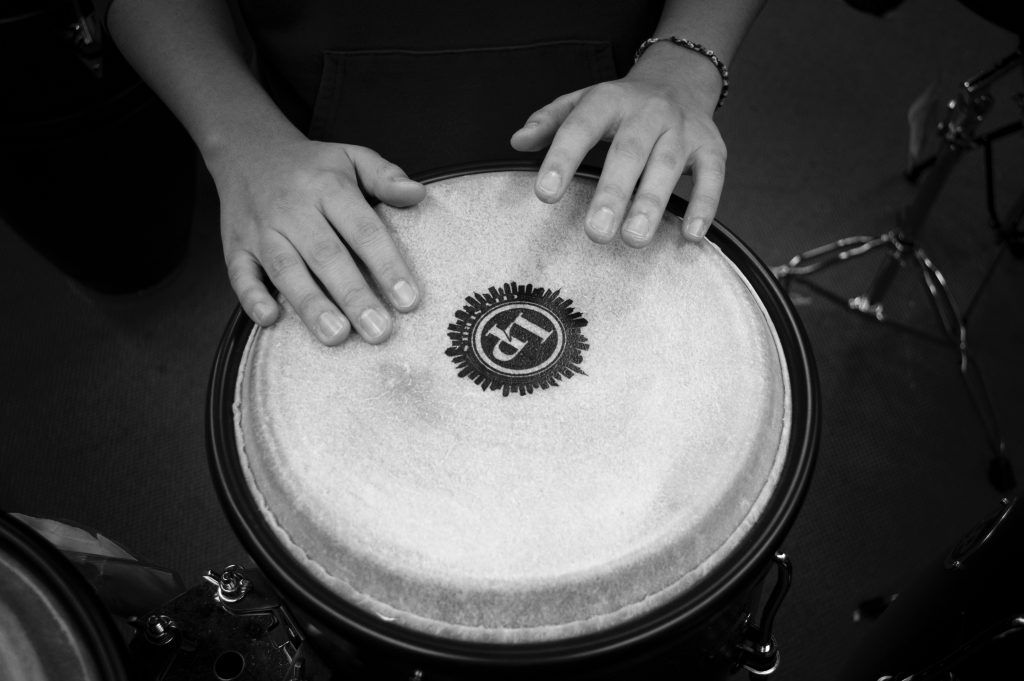Sound waves fill our world, from music to spoken words to the rustling of leaves in the wind. In this post, we’ll explore what sound waves are, their characteristics like amplitude and frequency, and review the speed of sound. Our aim is to make understanding sound waves straightforward and relatable. So whether you’re curious about how we perceive sound or want to understand the science behind it, this post has got you covered.
What We Review
What Type of Wave is a Sound Wave?
To understand sound, it’s important to know what kind of wave it is. Sound is a longitudinal wave. This means that the particles in the medium (like air) move back and forth in the same direction that the sound wave is traveling. Now let’s break down what this means and why it matters.
Transverse and Longitudinal Waves
Waves can generally be categorized into two types: transverse and longitudinal.
- Transverse Waves: In a transverse wave, the movement of the particles in the medium (could be air, water, etc.) is at right angles to the direction of the wave. Think of a rope being whipped up and down; the wave moves along the length of the rope, but the rope’s actual movement is up and down, perpendicular to the wave direction.
- Longitudinal Waves: In a longitudinal wave, particles in the medium move back and forth along the same line that the wave travels. Imagine pushing and pulling a spring; the compressions and rarefactions (tightening and loosening of the spring’s coils) move along the length of the spring, the same direction in which you pushed or pulled it.
For a full review of transverse and longitudinal waves, be sure to visit our blog post on that topic.
How Sound Waves Are Produced
Sound waves are generated when something vibrates, like a drum skin when struck or vocal cords when you speak. These vibrations push and pull on the air molecules near them, causing these molecules to vibrate back and forth.

How Sound Waves Travel
Sound, being a longitudinal wave, makes the air molecules move in the same direction as the wave itself. For example, when a drum is hit, the drum’s surface vibrates, causing the nearby air molecules to move back and forth along the line of the wave. This series of compressions (where the air molecules are close together) and rarefactions (where they are spread apart) continue to travel through the air as a sound wave. This is how sound gets from the source (like the drum) to your ears.
Knowing that sound is a longitudinal wave helps you understand how it moves from its source, like a speaker, to your ears. This basic idea is key to understanding more detailed aspects of sound, such as its speed, loudness, and pitch.
Aspects of Sound Waves
Now that we understand sound as a longitudinal wave, we can look at the key features that shape how it behaves. These essential aspects are frequency, amplitude, and speed of sound. If you need to review these basic wave characteristics, visit this post to break down mechanical waves.
Frequency of Sound
Frequency refers to how many times a wave oscillates, or cycles, per second. In terms of sound, frequency determines the pitch of the sound you hear. High-frequency sound waves produce high-pitched noises, like a whistle, while low-frequency sound waves produce low-pitched noises, like a drumbeat. Frequency is measured in hertz (Hz), and in everyday life, human hearing ranges from about 20\text{ Hz} to 20{,}000\text{ Hz}.
Amplitude of Sound

Amplitude is another critical aspect of sound. It describes how “tall” the wave is and is directly related to the loudness of the sound. A sound wave with a higher amplitude will be louder than a sound wave with a lower amplitude. Think of amplitude like the volume knob on your stereo; turning it up increases the amplitude of the sound waves, making the sound louder. Amplitude is typically measured in decibels (dB). The table below shows the sound level in decibels for a range of sources.
| Sound Source | Sound Level (\text{dB}) |
| Threshold of hearing | 0 |
| Whisper | 20-30 |
| Normal conversation | 60-70 |
| Traffic noise | 70-85 |
| Lawnmower | 85-90 |
| Rock concert | 110-120 |
| Jet engine (at 100 feet) | 140 |
Speed of Sound
Lastly, let’s talk about the speed of sound, which varies depending on the medium through which it travels. In dry air at room temperature, the speed of sound is approximately 343\text{ meters per second}. In water, it’s faster—about 1{,}500\text{ meters per second}. The speed of sound is affected by factors like temperature, pressure, and the properties of the medium it’s traveling through.
The table below shows the speed of sound in various media.
| Medium | Speed of Sound (\text{m/s}) |
| Air (at 20^\circ\text{C}) | 343 |
| Freshwater | 1{,}480 |
| Seawater | 1{,}500 |
| Human tissue | 1{,}540 |
| Steel | 5{,}120 |
| Diamond | 12{,}000 |
By understanding these aspects—frequency, amplitude, and speed—you’ll have a comprehensive view of what sound waves are and how they function. This foundational knowledge sets the stage for a deeper understanding of sound and its many applications in our daily lives.
Technological Applications of Sound Waves
Sound waves have a range of applications in technology, enhancing various aspects of our lives. From musical instruments to medical imaging, the applications are diverse.
Instruments and Music
Musical instruments like guitars, flutes, and drums are classic examples of how sound waves can be manipulated to create harmony and melody. When you pluck a guitar string or hit a drum skin, you’re generating sound waves with specific frequencies and amplitudes. These waves interact to produce the musical tones we enjoy. Understanding the physics behind sound waves helps in the design and optimization of musical instruments, leading to better sound quality and a wider range of tonal possibilities.
Infrasonic
Infrasound refers to sound waves with frequencies below the human hearing range, typically less than 20 Hz. Despite being inaudible, these low-frequency waves have several practical applications. They are used in seismology to detect earthquakes and volcanic activity. Infrasound is also used for long-distance communication in certain animal species, such as elephants and whales. Additionally, it has applications in weather forecasting, as some weather phenomena generate infrasonic signals.
Ultrasonic technology
On the opposite end of the spectrum, we have ultrasonic sound waves, which have frequencies higher than the audible range, generally above 20{,}000\text{ Hz}. One of the most well-known applications of ultrasonic waves is in medical imaging, particularly in sonograms and ultrasound scans. These high-frequency waves can penetrate tissues and provide detailed images, making them invaluable in medical diagnostics. Ultrasonic waves are also used in industrial settings for detecting flaws in materials and in distance-measuring devices like sonar.

Understanding how sound waves function across different applications not only broadens our appreciation of their versatility but also opens the door for further technological advancements.
Conclusion
In this post, we’ve taken a comprehensive look at sound waves, starting with the basics of what type of wave sound is—a longitudinal wave. We discussed its key aspects like frequency, amplitude, and speed in various media, breaking down how these properties shape our auditory experiences. Then, we explored the practical applications of sound waves in technology, focusing on musical instruments, infrasound, and ultrasonics. Whether you’re interested in how we hear everyday sounds or in the broader technological applications, understanding these fundamentals provides a solid foundation for further exploration into the world of sound.








